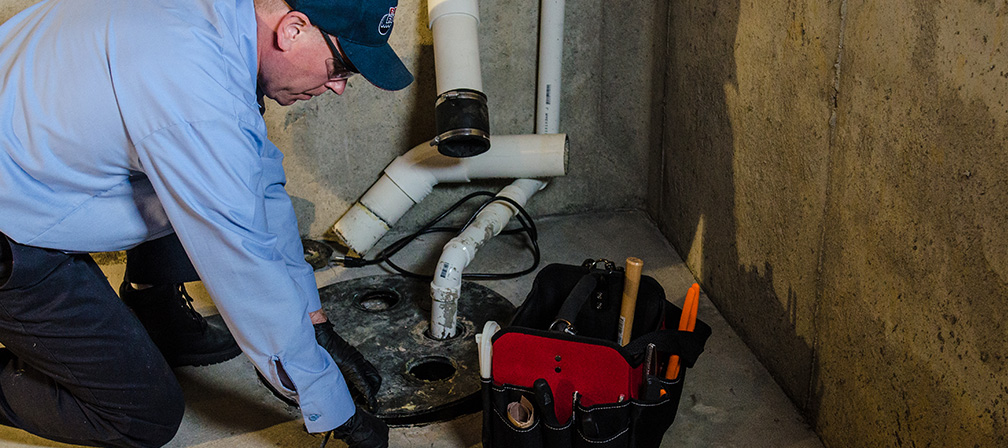Effective Tips for Caring for a Sump Pump
Effective Tips for Caring for a Sump Pump
Blog Article
What're your insights and beliefs about How to Care for Your Sump Pump?

Sump pumps are important parts in many homes, specifically in locations prone to flooding or too much dampness. They assist stop water damage by successfully removing excess water from basements or crawl spaces. However, like any other home appliance, sump pumps require normal upkeep to guarantee they operate properly when needed the most. Cleaning your sump pump is a crucial part of its maintenance, and understanding exactly how to do it effectively can save you from pricey repair services and possible catastrophes.
Intro
Preserving a clean sump pump is important for its appropriate performance and longevity. Neglecting this essential task can result in clogs, malfunctions, and inevitably, water damage to your residential or commercial property. Consequently, learning just how to clean a sump pump is essential for home owners who count on these gadgets to keep their basements dry and safeguarded.
Understanding the Sump Pump
Before diving right into the cleaning process, it's essential to have a standard understanding of how a sump pump functions. Typically installed in a pit or container below the cellar flooring, a sump pump includes a number of vital components, including a pump, a float button, and a discharge pipeline. When water gathers in the pit, the float button triggers the pump, which after that pumps the water out via the discharge pipeline, far from the building's structure.
Indications of a Dirty Sump Pump
Recognizing when your sump pump needs cleaning is essential for stopping possible breakdowns. Some typical indicators that show an unclean sump pump consist of odd noises throughout procedure, reduced water circulation, and visible particles in the pit. If you notice any one of these symptoms, it's vital to clean your sump pump promptly to prevent any more issues.
Getting ready for Cleaning
Prior to you start cleaning your sump pump, it's essential to take some safety and security precautions. Beginning by shutting down the power to the pump to avoid any type of electrical mishaps. In addition, put on ideal protective gear, such as gloves and goggles, to shield on your own from dust, particles, and prospective virus.
Step-by-step Overview to Cleansing a Sump Pump
Shutting Off the Power
Begin by separating the power supply to the sump pump to prevent any crashes while cleansing.
Removing Particles and Dirt
Utilize a pail or a scoop to remove any type of noticeable debris, dust, or sediment from the sump pit. Dispose of the particles appropriately to prevent it from obstructing the pump or the discharge pipeline.
Cleaning the Pump and Drift Switch
When the pit is clear of debris, thoroughly get rid of the pump from the pit. Examine the pump and the float switch for any type of indications of damage or wear. Use a soft brush or cloth to clean up the surface areas and get rid of any type of gathered grime.
Purging the System
After cleansing the pump and float switch, flush the sump pit with tidy water to eliminate any kind of staying dirt or sediment. This will help ensure that the pump runs efficiently and efficiently.
Looking For Correct Performance
Before reinstalling the pump, perform a quick test to make sure that the float switch activates the pump appropriately. Pour some water right into the sump pit and observe the pump's operation. If every little thing is functioning correctly, you can reassemble the pump and reconnect the power supply.
Upkeep Tips to Maintain Your Sump Pump Clean
In addition to regular cleansing, there are a number of upkeep suggestions you can follow to maintain your sump pump in optimum problem:
Verdict
Cleansing your sump pump is a critical element of its maintenance and makes sure that it runs successfully when you require it the most. By complying with the actions detailed in this overview and including normal maintenance right into your routine, you can expand the life-span of your sump pump and shield your home from water damage.
6 STEPS ON HOW TO CLEAN A SUMP PUMP PROPERLY
UNDERSTANDING SUMP PUMPS
Your sump pump plays a crucial role in protecting your home by managing and removing excess water. It primarily functions as a “shield”, guarding your basement against the damaging effects of water accumulation. The pump is housed in a sump pit in the lowest part of your basement, and its job is to pump out any water that collects there.
During heavy rainfalls or when snow melts rapidly, water can infiltrate your basement, posing potential risks like flooding, structural damage, and harmful mold growth. Here, the sump pump springs into action, pumping out the intruding water and directing it away from your home.
SAFETY FIRST
Before cleaning, remember to prioritize safety. Disconnect the sump pump from the power source to prevent any accidental electric shocks. Also, wear sturdy gloves to protect your hands from any sharp or dirty components within the pump.
REMOVE THE SUMP PUMP
After ensuring your safety, the next step is to remove the sump pump from its pit. Doing this might require careful maneuvering as you don’t want to damage any pump components. Once removed, clean the sump pit to remove any accumulated debris or sludge.
INSPECT THE PUMP
Inspect the pump for any visible signs of wear or damage. Check the power cord, float switch, and impeller housing. If any components look worn out or damaged, consider replacing them to ensure optimal performance.
CLEAN THE PUMP
Thoroughly clean the pump with warm, soapy water. Make sure to rid it of any dirt, gravel, or other debris that might impede its performance. You can use a toothbrush to clean the small, hard-to-reach parts of the pump.
REINSTALL THE SUMP PUMP
Reinstall the pump into the sump pit Make sure it’s positioned correctly to remove the water effectively Once it’s back in place, reconnect it to the power source TEST THE PUMP
Finally, pour some water into the pit to ensure the pump works correctly. It should start automatically and begin pumping out the water; if it doesn’t, check the power source and the positioning of the pump.
Remember, while cleaning your sump pump is an essential part of home maintenance, hiring a professional plumber for a thorough inspection and cleaning at least once a year is also important. This will ensure that your pump is in optimal condition, ready to protect your home from potential water damage.
BEST PRACTICES FOR CLEANING SUMP PUMP DISCHARGE PIPES
Regular Inspection: Regularly inspect your discharge pipes, especially during heavy rainfall or snowmelt periods. Look for any signs of blockage or damage. Early detection of problems can prevent serious issues down the line. Periodic Cleaning: Over time, sediment and debris can accumulate in the discharge pipes, impeding the flow of water. Regular cleaning helps keep the pipes clear and functioning efficiently. You can use a high-pressure water jet to effectively clean the pipes. Insulation During Winter: In colder climates, discharge pipes can freeze, blocking the outflow of water. Protect your discharge pipes from freezing temperatures by insulating them with foam pipe insulation. This will ensure the sump pump can continue to discharge water even in freezing conditions. Proper Positioning: The discharge pipe should be positioned to direct water away from your home’s foundation. Improper positioning can lead to water seeping back into the basement. Ensure the pipe is long enough and angled correctly. Installation of a Check Valve: A check valve prevents water from flowing back into your sump pit after the pump has pushed it out. Installing a check valve helps maintain the efficiency of your sump pump and reduces the risk of flooding. Minimize Pipe Turns: Every curve or turn in the discharge pipe can decrease the efficiency of water flow. By minimizing turns and bends in your discharge pipe, you can increase the efficiency of your sump pump. https://www.fullspeedplumbing.com/how-to-clean-a-sump-pump-properly9999/

As an avid person who reads on Steps to Cleaning Your Sump Pump Properly, I figured sharing that piece of content was a good idea. So long as you liked our page kindly don't forget to pass it around. We treasure your readership.
Recurring Service Plans Report this page